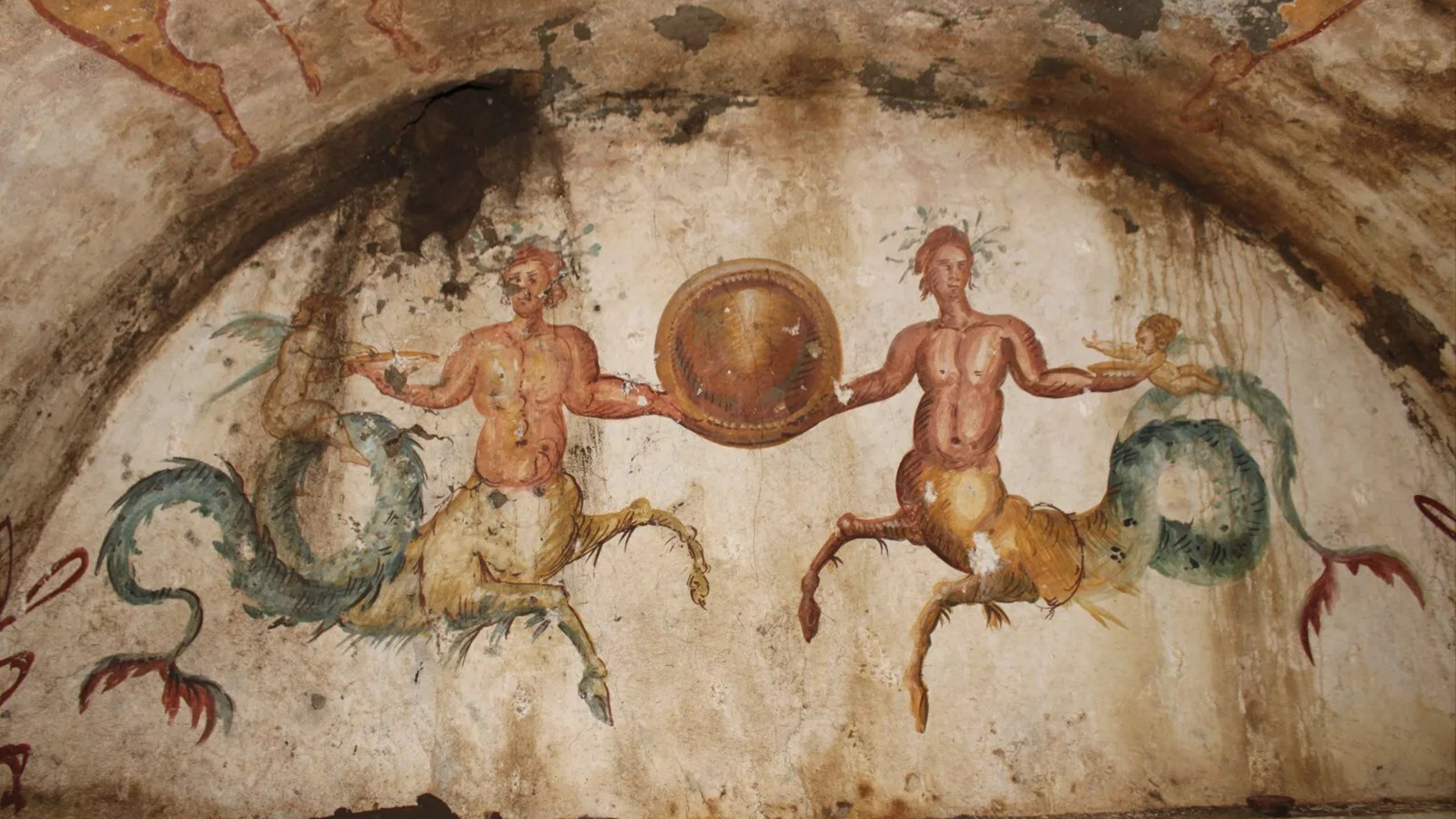Mythical hellhound and sea-centaurs painted on 2,200-year-old tomb discovered in Italy
Paintings of sea-centaurs, the hellhound Cerberus and other mythical beings cover a 2,200-year-old tomb unearthed near Naples in Italy.

Archaeologists in Italy have unearthed a 2,200-year-old tomb painted with two uncommon mythical creatures: a pair of ichthyocentaurs, or sea-centaurs, which have the head and torso of a man, the lower body of a horse and the tail of a fish.
During excavation for infrastructure work near Naples, archaeologists noticed the hypogeum — a large tomb with chambers or niches for burying several people — in perfect condition, its entrance still covered with tiles.
Inside the tomb, numerous frescoes adorn the walls. The two ichthyocentaurs may be depictions of Aphros and Bythos, a pair of mythological sea gods who are the personification of sea foam and the ocean abyss. The sea gods are often shown wearing lobster-claw crowns, but on the wall of this tomb, they are reaching toward each other to hold a large shield known as a clipeus. Two winged, Cupid-like babies complete the scene.
The tomb is also covered in painted garlands and features a stunning painting of Cerberus, the mythical three-headed dog who guarded the Roman underworld, who is being captured by the demigod Hercules in the last of his 12 labors. The god Mercury, identifiable by his winged hat, stands nearby.
Also included in the tomb are an altar on which family members could leave gifts for the dead, as well as the funeral beds themselves, on which the deceased still rest.
In a translated statement from the Superintendency for the Metropolitan Area of Naples, Superintendent Mariano Nuzzo said the feeling of discovering the tomb is indescribable and thanked archaeologists for their efforts to uncover and preserve information about the history of the Giugliano region. Today a suburb about 7.5 miles (12 kilometers) northwest of Naples, Giugliano was one of the smaller inhabited parts of Campania, a fertile region that in ancient times included cities from Capua to Salerno.
Sign up for the Live Science daily newsletter now
Get the world’s most fascinating discoveries delivered straight to your inbox.
Previous archaeological investigation in the Campi Flegrei volcanic area surrounding Giugliano revealed a number of Roman-era burials — both inhumations and cremations — that were dug over the course of four centuries, from the Republican to the Imperial eras.
Archaeologists are fully exploring the burial, dubbed the Tomb of Cerberus, and plan to investigate the rest of the burial ground.

Kristina Killgrove is a staff writer at Live Science with a focus on archaeology and paleoanthropology news. Her articles have also appeared in venues such as Forbes, Smithsonian, and Mental Floss. Killgrove holds postgraduate degrees in anthropology and classical archaeology and was formerly a university professor and researcher. She has received awards from the Society for American Archaeology and the American Anthropological Association for her science writing.









